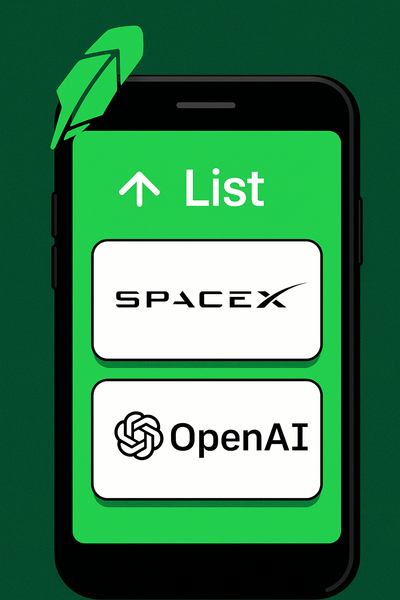Bitcoin DeFi's Next Big Leap: REE Protocol Brings True Programmability to Layer 1
0 comments

Imagine swapping your Runes tokens in seconds instead of waiting 20 minutes, or building complex DeFi applications directly on Bitcoin without the hassle of Layer 2 bridges. Sounds too good to be true? Well, the team behind Omnity Network thinks they've cracked the code with their new Runes Exchange Environment (REE) protocol and honestly, after diving into their approach, it might just be the game-changer Bitcoin DeFi has been waiting for.
Let's face it, Bitcoin has always been the king of crypto, but when it comes to DeFi, it's been sitting on the sidelines while Ethereum and other chains have all the fun. The problem? Bitcoin's Layer 1 is painfully slow and lacks the programmability that makes DeFi possible. Sure, there are Bitcoin Layer 2 solutions, but they come with their own headaches: long confirmation times, poor cross-chain experiences, and that nagging feeling that you're not really using "real" Bitcoin anymore.
The Problem: Bitcoin DeFi is Stuck in Traffic
Louis Liu, founder of Omnity Network, puts it perfectly: "Bitcoin is very slow and uses the POW mechanism. Transaction confirmation requires multiple confirmations... it usually takes about an hour to complete the transaction confirmation from Bitcoin Layer 1 to other chains."
This creates a chicken-and-egg problem. Bitcoin Layer 1 lacks liquidity because there's no proper DeFi infrastructure, but Layer 2 solutions remain "drier" because all the action should start from Layer 1 first. It's like trying to build a shopping mall on the second floor when there's no proper ground floor entrance. Sure, it can work, but nobody wants to climb through the window every time.
The Omnity team, who already built a successful cross-chain protocol with over $2M TVL, realized something crucial: instead of forcing everyone to move to Layer 2, why not bring proper DeFi functionality directly to Bitcoin's Layer 1?
Enter REE: The Technical Breakthrough
REE (Runes Exchange Environment) isn't just another Bitcoin Layer 2, it's something fundamentally different. Think of it as giving Bitcoin Layer 1 a brain transplant without changing its body.
The secret sauce lies in what they call DPS (Decentralized PSBT Signing). Here's how it works in simple terms: instead of waiting for Bitcoin's slow block confirmations, users sign partial transactions (PSBTs) that get processed almost instantly by smart contracts running on the Internet Computer Protocol (ICP). These smart contracts can hold Bitcoin addresses and sign transactions on behalf of pools and protocols.
"From the user's perspective, transaction latency is just a few seconds," explains Louis. The magic happens through something called "optimistic execution and batch settlement": transactions are processed immediately and batched together for Bitcoin settlement, creating parent-child transaction chains that can handle up to 25 transactions per pool in a single Bitcoin block.
Why ICP? The Backbone That Makes Sense
You might be wondering, "Why ICP of all chains?" Fair question. The Omnity team chose ICP for three solid reasons that actually make a lot of sense:
Chain Key Subnet: This is ICP's MPC/TSS network that's been securing billions in crypto assets without any failures since launch. It's battle-tested infrastructure, not some experimental tech.
Bitcoin Subnet: Every ICP node runs a full Bitcoin node and connects to Bitcoin via P2P protocol. This means smart contracts can interact with Bitcoin directly, fully on-chain, without relying on sketchy centralized processes.
On-chain Runes Indexer: Omnity ported the Ord Indexer to ICP, enabling full on-chain Runes functionality. No more trusting third-party indexers or waiting for off-chain processes.
As Tim Shell from Shell Finance notes, "ICP, after all, is a chain ranked in the top 30 by market capitalization and has undergone a full operational cycle without any significant issues."
RichSwap: The First REE Application
The first application launching on REE will be RichSwap, a Runes AMM DEX expected in Q1 2025. But here's the kicker – it's not just another DEX. RichSwap is designed as a template and liquidity hub for the entire BTCFi ecosystem.
The platform will feature a built-in value capture mechanism where protocol revenues get donated to trading pools, effectively driving up token prices. RichSwap has already committed to donating its protocol revenue to the HOPE•YOU•GET•RICH Runes ($RICH), creating a sustainable tokenomics model that other projects can adopt.
"An AMM DEX can become a DeFi liquidity hub, helping subsequent projects bootstrap liquidity more quickly," Louis explains. It's like building the foundation that everyone else can build upon.
Solving Real Problems, Not Creating New Ones
What impressed us most about REE is how it addresses actual pain points without creating new complications:
MEV Protection: By using SIGHASH_ALL signatures, REE prevents transaction outputs from being altered, reducing sandwich attacks and other MEV exploits.
No New Tokens: REE doesn't have its own token or charge gas fees. It's an open platform where applications can issue their own tokens.
Existing Asset Compatibility: Unlike other solutions that force you to use new asset standards, REE works with existing, widely-accepted standards like Runes and BTC.
Rollback Handling: Through state-chain data structures, REE can handle the occasional rollback when Bitcoin transactions get replaced or overridden, ensuring system stability.
Why Builders Should Pay Attention
For DeFi builders who've been eyeing Bitcoin but frustrated by its limitations, REE presents a compelling proposition. You get:
- True Bitcoin Layer 1 integration without compromising on user experience
- Second-level transaction latency instead of 10-minute waits
- Battle-tested infrastructure with ICP's proven track record
- Open platform approach that doesn't lock you into proprietary standards
- Template applications like RichSwap to learn from and build upon
The technical approach is solid, the team has proven experience (Omnity Hub already processes significant cross-chain volume), and the timing feels right as Bitcoin DeFi finally starts gaining momentum.
The Road Ahead
REE documentation, code examples, and a public testnet are coming soon. For developers interested in building Bitcoin DeFi applications, this might be your chance to get in early on what could become the standard infrastructure for Bitcoin Layer 1 DeFi.
As Louis puts it, "We are confident we can keep latency at the second level, ensuring that most optimistically executed transactions won't require rollbacks. This approach delivers a seamless user experience for BTCFi on REE."
The question isn't whether Bitcoin DeFi will take off, it's which infrastructure will power that growth. Based on what we've seen, REE might just be the platform that finally unlocks Bitcoin's DeFi potential.
Ready to build the future of Bitcoin DeFi? Follow Omnity on Twitter for updates on REE documentation, testnet access, and development resources. The revolution starts with the builders who show up early.
REE represents a fundamental shift in how we think about Bitcoin programmability, not as an afterthought that requires leaving Bitcoin, but as a natural extension of what Bitcoin can do when properly architected. For builders ready to shape the next chapter of Bitcoin DeFi, the door is opening.



Comments